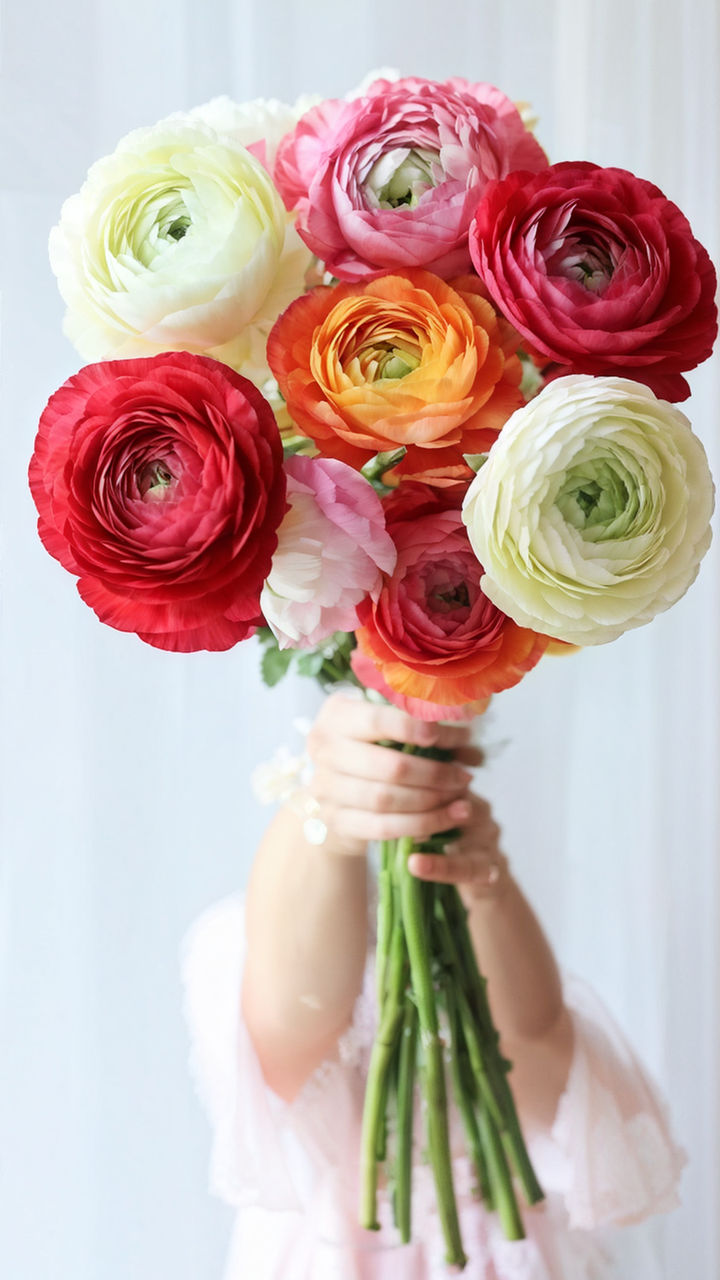Showing all 2 results

The ranunculus, with its gossamer-like petals and a kaleidoscope of hues, enchants both gardeners and floral designers. Native to the eastern Mediterranean, the ranunculus, or Persian buttercup, is a member of the Ranunculaceae family. Celebrated for their rosette-shaped blossoms, these flowers span a palette from alabaster white to rich burgundy, including luminous yellows, pinks, and oranges. Beyond its visual appeal, the ranunculus carries a heritage of charm and allure across cultures.
Garden enthusiasts prize ranunculus for its extended flowering phase, lasting up to six weeks in spring and early summer. Its prominence in bridal bouquets and elegant arrangements stems from its opulent, tiered look and versatility in various settings. This section delves into the ranunculus’s distinctive traits, its roots, and its rising fame as a garden and decor staple. Step into the ranunculus realm, where each petal narrates a tale of refined beauty.
Successful ranunculus cultivation begins with correct planting. These flowers flourish in well-aerated soil under full sunlight. Planting ranunculus corms suits mild winters, while spring planting post-frost suits colder areas. Bury corms about 2 inches deep and space them 4 to 6 inches apart for optimal growth.
Ranunculus prefers steady moisture but is prone to root decay, so sparing watering is key. Apply a balanced, slow-release fertilizer during planting to boost root strength. For taller varieties, stakes can support stems, ensuring an erect posture.
Once blooming, frequent deadheading of wilted flowers spurs further blossoming. Post-flowering, let the foliage wither naturally, aiding corms in energy storage for the next growth cycle. In frost-prone regions, uplift and store ranunculus corms in a cool, arid place for winter protection.
This section offers insights into planting and maintaining ranunculus, aiming for a vibrant and abundant display in gardens or floral designs.
For a magnificent ranunculus bloom, adhere to key care practices. During growth, provide ample sunlight and water, but avoid excess. A balanced, low-nitrogen fertilizer every four weeks can enhance bloom vibrancy. Regularly inspect for pests like aphids, controllable with insecticidal soap or neem oil.
Post-bloom, keep the foliage intact for continued photosynthesis, vital for corm nourishment and next season’s growth. Once the leaves yellow and wither, remove them gently.
In cold climates, where corms aren’t winter-hardy, excavate them post-foliage death. Store these corms in a cool, dry setting over winter, then replant in spring. This practice can extend corm life for multiple seasons.
In milder climates, leave ranunculus in the ground for natural dormancy and spring resurgence. A mulch layer can shield corms from harsh temperatures.
This section guides through post-bloom ranunculus care, ensuring the endurance and vitality of these exquisite flowers for future seasons.
Viva Flowers, Inc
Flower Shop in Boca Raton
491 NE 20th St Boca Raton , Fl 33431
Sunday – Friday 8-30 a.m. to 6-00 p.m
Saturday 9 a.m. – 4 p.m.